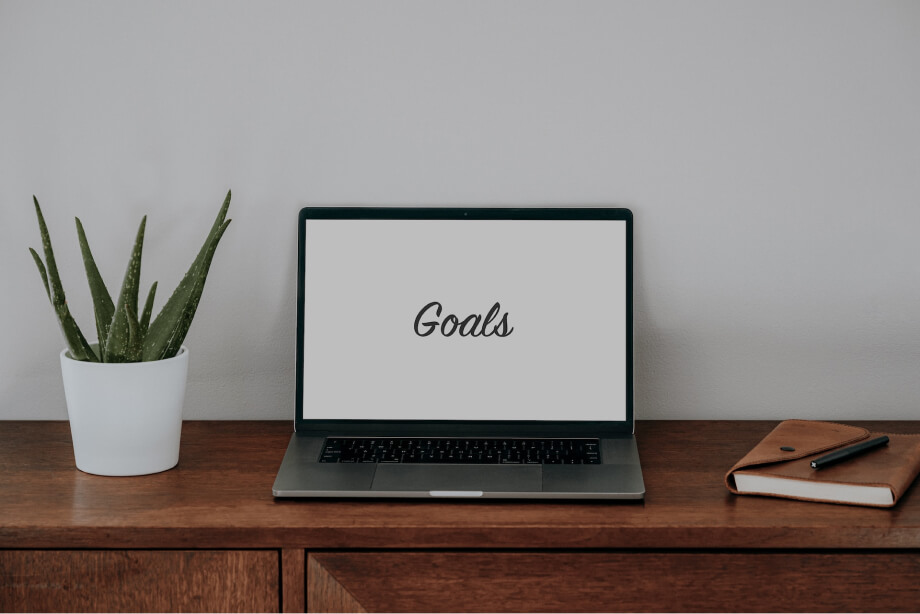In the bustling digital marketplace, where attention spans are fleeting and competition is fierce, your website is more than just an online presence; it’s your silent salesperson, working tirelessly to captivate, engage, and convert visitors into loyal customers. The success of your digital storefront hinges on the art of web design, a delicate dance between aesthetics, functionality, and user experience.

Essential Web Design Practices: Simple Steps for Success
Imagine a website that greets you with a warm embrace, its design seamlessly guiding you on a journey. Each page unfolds like a captivating story, the visuals working with the content, creating an experience that is both informative and aesthetically pleasing. This is the power of web design, the ability to transform a digital space into an immersive experience that resonates with your audience.
But great web design is not merely about creating eye candy; it’s about understanding the psychology of your visitors, anticipating their needs, and crafting a website that is not only easy to use but also emotionally engaging. It’s about forging a connection with your audience, building trust, and establishing your brand as a thought leader in your industry.
Join us as we delve into the world of web design, exploring the best practices that we use to elevate your digital presence and propel your business to new heights. We’ll show you the secrets of how we craft websites that captivate and convert, transforming your silent salesperson into a powerful force in the digital marketplace.

Know Your Goals
Before diving into the creative aspects of web design, it’s essential to take a step back and define your website’s objectives. What do you want your website to achieve? Whether it’s boosting sales, generating leads, or simply providing valuable information, having clear goals will guide the entire design process and ensure that your website is tailored to meet your specific needs.
Conversions
If your primary goal is to boost sales, your website should be designed with conversion in mind. This means creating a seamless shopping experience, highlighting product features, and incorporating secure payment gateways. A well-structured product catalog, high-quality product images, and strategically placed calls-to-action (CTAs) can significantly enhance your conversion rates.
Generating leads
For businesses that rely on lead generation, your website serves as a magnet, attracting potential customers and capturing their contact information. To effectively generate leads, consider incorporating lead capture forms, offering valuable content in exchange for email sign-ups, and implementing social media sharing buttons.
Brand awareness
In today’s competitive marketplace, establishing brand awareness is essential for differentiation and long-term success. Your website plays a pivotal role in communicating your brand’s identity, values, and unique selling proposition (USP). A cohesive visual identity, consistent messaging, and engaging content can effectively elevate your brand awareness and position your company as a thought leader in your industry.
Building trust with your expertise and knowledge
If your goal is to establish your company as a trusted source of information, your website should be a treasure trove of valuable content. Regularly publish informative blog posts, create engaging infographics, and offer insightful videos to attract and retain visitors. By demonstrating your expertise, you can build trust with your audience and position your company as a reliable resource in your field.
User Experience: The Heart of a Successful Website
user experience (UX) reigns supreme. It’s the driving force behind a website’s success, ensuring that visitors can seamlessly navigate, find the information they want, and complete their desired actions without frustration or confusion. By prioritising UX, you create a website that is not only visually appealing but also user-friendly, accessible, and engaging.
Understanding Their Needs and Preferences
Effective web design begins with empathy. Step into the shoes of your users, understanding their needs, preferences, and behaviours. Consider their demographics, technological literacy, and expectations. What devices do they use to access the internet? What tasks do they hope to accomplish on your website? By understanding your audience, you can design a website that resonates with their needs and expectations.
User-Centered Design (UCD)
User-centered design (UCD) is a collaborative approach that places users at the heart of the design process. It involves gathering user feedback through surveys, interviews, and usability testing to identify pain points and areas for improvement. By incorporating user insights into the design process, you ensure that your website is tailored to the needs and preferences of your target audience.
Accessibility: Creating an Inclusive Digital Experience
Accessibility isn’t just a buzzword; it’s a fundamental principle of web design. It means ensuring that your website is accessible to users with disabilities, including those with visual, auditory, motor, or cognitive impairments. By following accessibility guidelines, such as WCAG 2.1, and incorporating inclusive design principles, you can create a website that welcomes and accommodates all users, regardless of their abilities.
Responsive Design
Responsive web design is essential in this day and age. For the most part you won’t see a website created without mobile devices in mind these days. Your website should adapt seamlessly to various screen sizes, from desktops and laptops to tablets and smartphones. Ensure that your website’s layout, font sizes, and touch targets are optimized for each device, providing a consistent and enjoyable user experience across all platforms.
Establishing a Consistent Brand Aesthetic
your website’s visual identity is your brand’s ambassador, speaking volumes about your company’s personality, values, and unique selling proposition (USP). A cohesive visual identity is the cornerstone of a successful website, ensuring that every visual element, from colour palettes to typography, aligns with your brand’s messaging and creates a unified and recognisable brand experience.
Colour Theory
Colour plays a powerful role in influencing perceptions and evoking emotions. Carefully select a colour palette that aligns with your brand’s personality and messaging. For instance, warm colours like red and orange convey energy and excitement, while cool colours like blue and green instil a sense of calmness and trust. Use colour strategically to create visual harmony and guide users’ attention.
Typography is Your Voice
Typography is more than just choosing fonts; it’s about selecting typefaces that embody your brand’s personality and determines your content legibility. Consider the overall style and tone of your brand. Does a classic serif font exude elegance and tradition, or does a modern sans-serif font convey innovation and accessibility? Use typography consistently throughout your website to create a cohesive and recognisable brand experience.
Visual Storytelling with Imagery
High-quality imagery is the visual storyteller of your website, capturing attention and enhancing brand recognition. Ensure your images are relevant to your content, visually appealing, and consistent with your brand’s aesthetic. Use a mix of imagery, including hero images, product shots, and lifestyle photos, to create a visually engaging and memorable experience for your visitors.
Consistency is Key
Creating a brand style guide will keep your branding in line. This guide should outline your colour palette, typography guidelines, image style, and any other relevant visual elements. By following the brand style guide, you can ensure that your website is visually cohesive and recognisable as your brand.
Website Performance: Make it Fast!
A website that loads slowly or doesn’t adapt to different devices can frustrate users, increase bounce rates, and negatively impact your search engine rankings. By optimising website performance, you deliver a smooth, engaging, and responsive experience for all visitors.

Minimise Image Sizes
Images are essential for visually enhancing your website, but they can also significantly impact loading speed. Optimise your images by reducing their file sizes while making sure not to compromise quality.
Think About Responsive Design and Mobile Users
Smart phones and tablets are more common these days than ever. It’s hard to avoid the fact that more people shop on their phones these days than on a desktop device or laptop. Thinking about an optimal viewing experience regardless of the device will help you to make performance optimisations to make your website blisteringly fast from the get go.
SEO: The Key to Unlocking Organic Traffic and Boosting Your Digital Presence
Search Engine Optimisation (SEO) is the art and science of improving your website’s ranking in search engine results pages (SERPs), ensuring that your website appears prominently when users search for relevant keywords. By implementing effective SEO strategies, you can attract organic traffic, enhance brand awareness, and ultimately achieve your goals

Keyword Research
To achieve effective SEO, it’s crucial to identify relevant keywords that your target audience uses when searching for related information or products. Utilise keyword research tools to analyse search volume, competition, and related keywords. Strategically incorporate these keywords into your website’s content, page titles, and meta descriptions to attract more visitors to your website.
Quality Content is king
High-quality, relevant content is the lifeblood of your website and a key factor in SEO success. Create informative, engaging content that addresses your audience’s needs, answers their questions, and establishes your website as a trusted source of industry information. Optimise your content for search engines by using relevant keywords naturally throughout your articles, blog posts, and product descriptions.
Technical SEO
Technical SEO focuses on the underlying structure and code of your website to ensure it’s optimised for search engine crawling, indexing, and content understanding. Optimise your website’s loading speed, URL structure, internal linking, mobile responsiveness, and sitemap to enhance its technical SEO performance.
Collect quality backlinks
Backlinks, or links from reputable websites to your own, serve as votes of confidence in your website’s authority and credibility. Focus on building high-quality backlinks from relevant and respected websites in your industry. Effective strategies for acquiring valuable backlinks include guest blogging, participating in online communities, and creating linkable content. Please for the love of god don’t go buying backlinks. This will potentially harm you’re SEO efforts and website authority.
Maintain and Update Your Website
Just as software and apps require regular updates to address bugs and security vulnerabilities, your website also needs regular maintenance to keep it up-to-date and secure. Apply security patches promptly to protect your website from cyberattacks and data breaches. Regularly update your website’s content management system (CMS), plugins, and themes to ensure compatibility and optimal performance.
Keeping Your Content Relevant and Engaging
This isn’t the first time we’ve mentioned this but your website’s content is really important, attracting visitors and providing valuable information. Regularly review and update your content to ensure it remains relevant, accurate, and engaging for your audience. Consider refreshing outdated content, adding new articles or blog posts, and optimising existing content for better search engine visibility.
Backup Your Backups
You can never be too safe! Regularly back up your website’s data to protect against data loss, cyberattacks, or human error. We run daily website backups and server backups to make sure we can recover in the event of a disaster.
Finally, the end!
Ok, so this was a very long post I know. Hopefully you found it informative. Web design is not a one-time accomplishment; it’s an ongoing journey of continuous improvement, adaptation, and innovation. By learning and adapting to evolving user expectations, web designers can create websites that not only captivate and engage but also contribute to long-term success of your business.
Did this spark your interest? Then get in touch with Blunt Notion today to discuss how we can help you.
Did you find this blog post insightful and informative?
If so, please help us spread the word by sharing it with your friends, colleagues, and followers on social media.
